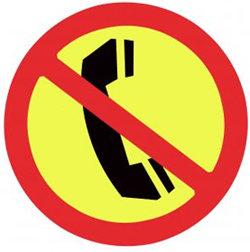I’ve been reading a lot about customer frustration these days – due to decreasing customer service levels or decreasing customer tolerance. Probably both.
Here are two prime examples:
- A customer is put on hold indefinitely and unable to track down a living, breathing person to actually talk with. (“Your call is important to us” … yeah, right!)
- Based on a unsatisfactory training experience, a customer requests a refund. The training company denies and refutes the request in a series of back-and-forth emails with the customer.
As a marketer, here’s my take on these situations:
- Put on Hold: The customer eventually got through to the company after sending a copy of her blog post. The company explained the “long hold” situation to the customer as a result of increased call volume due to new industry regulation. Stuff happens, but does this excuse the company? One hopes the company learns from this experience so it can be better prepared (via better planning and agility) to respond the next time it has to deal with increased customer calls. That some companies don’t learn this lesson only adds to consumer cynicism. Consider this comment posted in response to the blogger’s question: “Does it sometimes seem they might be doing this on purpose, as if perhaps they just don’t want to provide customer service at all … ?” “It’s a carefully contrived conspiracy, formulated in strategy meetings at the highest level.”
- Refund Request: What’s puzzling in this case is the company spent a lot of time and energy defending its training program, ultimately creating greater customer alienation and negative word-of-mouse (i.e., the 21st century version of word-of-mouth that with a mouse click can be instantaneously shared with millions of people). I don’t understand why the company didn’t just refund the customer’s money to “recover” the situation and minimize brand damage. Most customer-focused training and professional development offer money-back guarantees as good business practice. Even some training firms who don’t promote guarantees will prudently refund part or all of a registration fee to a dissatisfied customer.
Note to all companies: You need not buy-into the “customer is always right” concept. Whether the customer is right or wrong is irrelevant. What matters – and the reality you ultimately need to deal with – is that the customer perceives s/he is always right!
On the bright side, I recently came across these examples of positive customer service: Shannon, a food server at Einstein Bagels in Dallas TX, who took care of her immediate customer and those that followed;. And Sharman, Verizon business tech support, who stayed on the line with her customer for several hours to resolve that customer’s issue.
What do you think?
For every customer service horror story, there is a positive one … and vice-versa. Although we tend to hear more of the negative experiences than the positive, what is your take on what’s happening to customer service these days?





